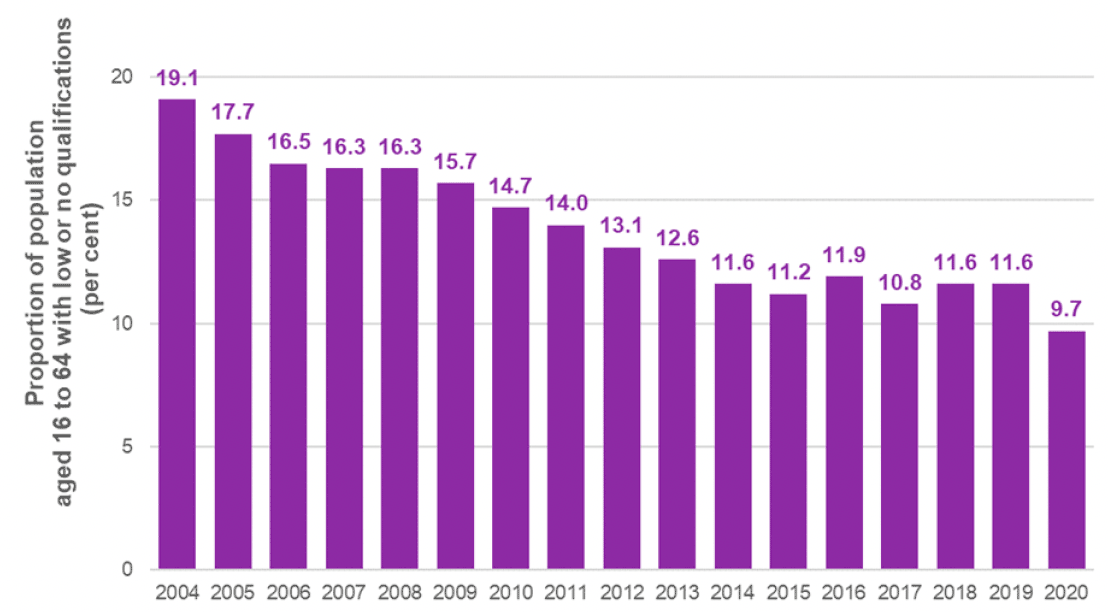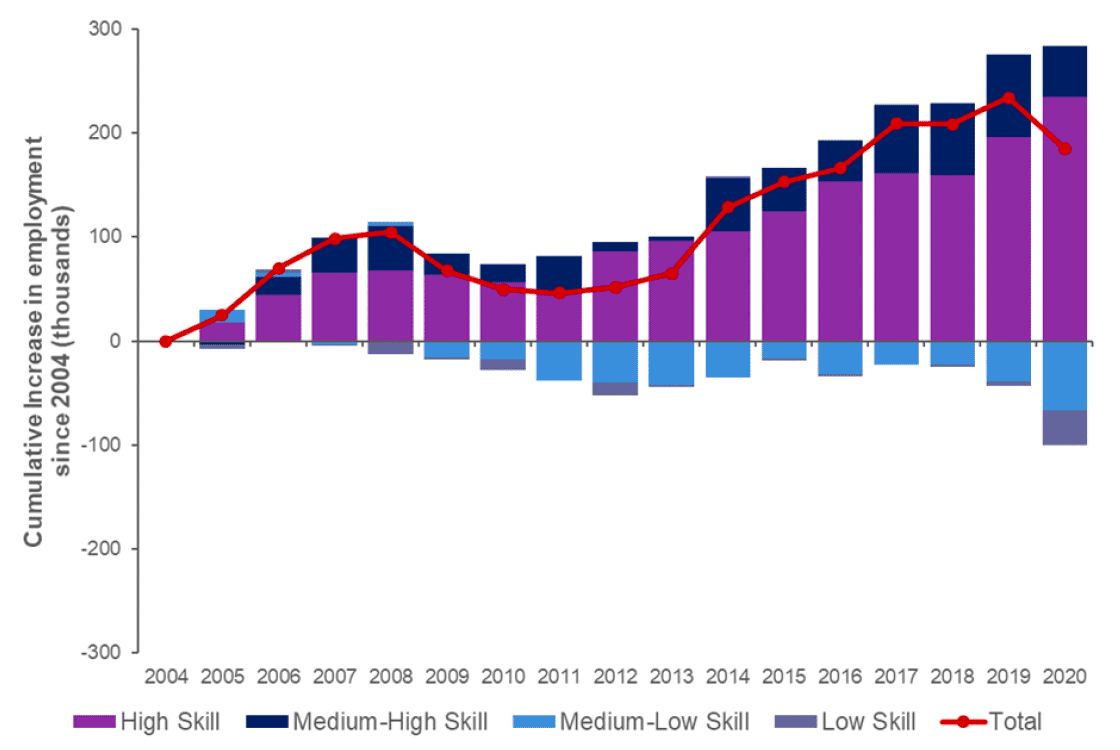Scotland's Labour Market: People, Places and Regions - Statistics from the Annual Population Survey 2020/21
Summary publication of results from the Annual Population Survey 2020/21, presenting analysis on the labour market, education and training.
Section 3: Skills
3.1 Skills of Population
Section 3 of the publication is based on the January to December Annual Population Survey datasets.
National Performance Framework Indicator
Skill profile of the population
In January-December 2020, an estimated 9.7 per cent (324,700) of the population in Scotland aged 16 to 64 years old have low or no qualifications (SCQF level 4 or below).
The proportion of the population with low (SCQF level 4 or below) or no qualifications has been decreasing over time. The proportion of the population with low or no qualifications has decreased by 1.9 percentage points in the last year, from 11.6 per cent in January-December 2019 to 9.7 per cent in January-December 2020. This represents a statistically significant decrease.

Source: Annual Population Survey, January-December datasets, ONS
There is regional variation across Scotland in the proportion of the population aged 16-64 with low or no qualifications.
In January-December 2020, the highest proportion of people aged 16 to 64 with low or no qualifications were in:
- West Dunbartonshire (15.8 per cent),
- Inverclyde and North Lanarkshire (14.6 per cent); and
- Glasgow City (13.5 per cent).
In the last year, the proportion of the population with low or no qualifications has decreased in 23 local authorities and increased in nine local authorities across Scotland.
The largest decreases were seen in:
- Falkirk down by 6.2 percentage points to 11.9 per cent;
- Renfrewshire down by 5.4 percentage points to 5.1 per cent; and
- Stirling down by 4.7 percentage points to 7.3 per cent.
These represent statistically significant decreases over the year.
Since January-December 2010, the proportion of the population with low or no qualifications has decreased in 31 local authorities and increased in one local authority across Scotland.
The largest decreases was seen in:
- Renfrewshire, down 11.6 percentage points to 5.1 per cent;
- Glasgow City, down 10.3 percentage points to 13.5 per cent; and
- North Lanarkshire, down 8.5 percentage points to 14.6 per cent.
These represent statistically significant decreases over the ten year period.
3.2 Occupational Skills
Between January-December 2004 and January-December 2020, there has been a gradual increase in the employment levels in high skilled occupations (e.g. functional management in finance, marketing, public finance, etc.) and medium-high skill occupations (e.g. health associate professional, nursing, etc.).
Employment in high skilled occupations increased by 5.3 per cent between 2019 and 2020, increasing from an estimated 732,800 to 771,900 people aged 16 and over while medium-high skilled occupations decreased by 4.2 per cent from an estimated 736,600 to 705,700 people over the same period.
In January-December 2020, high and medium-high skilled occupations accounted for an estimated 56.6 per cent of all jobs.

Source: Annual Population Survey, January-December datasets, ONS
An estimated 43.4 per cent of jobs are low skilled or medium-low skilled.
There has been a decline in employment in medium-low and low skilled occupations (e.g. sales assistant, retail cashier) between 2004 and 2020. Over the last year, employment in medium-low skilled occupations decreased by 3.0 per cent, from an estimated 901,700 in 2019 to 874,400 in 2020 people aged 16 and over. Low skilled occupations (e.g. bar staff, cleaning, etc.) also declined, by 10.2 per cent, from an estimated 288,000 in 2019 to 258,600 in 2020. These have been the largest annual decreases across the time series.
Contact
Email: lmstats@gov.scot
There is a problem
Thanks for your feedback